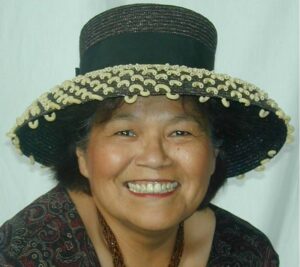Niizhwaaswi G’mishomisinaanig (Our 7 Grandfathers)
(Etymology, Interpretation and Reading by Helen Fuhst Roy)
Learn more about Helen’s work at helenroy.net
Like all cultures that survive many centuries, there is collective knowledge about the meaning of life that is shared from one generation to the next. The Anishinaabeg have many stories about the world and how to best be a part of it. Seven is an important number for many reasons. There were seven stops on the westward migration journey, some petroglyphs depict seven beings in a boat, some constellations have seven stars and there are stories of Seven Grandfathers. The origin of the various teachings is unknown but elders confirm these teachings were originally framed as actions based on what to do in life. The idea of “Seven Grandfathers” as nouns is more recent and may have been a response to the 10 Commandments or 7 Articles of the Constitution. The Anishinaabe philosophy is that through living well, life continues to improve. These words are considered reminders of how to do that. Regardless of how and why they came to be used, they are connected to the concept of minobimaadizi, which is a verb that means someone is living well.
Each one of these concepts can be viewed in five different ways:
- When something is just present in the world without beings making it happen (love is in the universe, truth is beyond beings)
- When a being acts out or exemplifies one of these ideas (I love you, you love me)
- When a being expresses one of these toward a non-being or a part of our universe (you can love the lake, respect the air)
- When a being expresses these toward another being or a part of our universe (this implies a relationship)
- When we talk about any one of these ideas separately as something we might have or not have
The list of Seven Grandfathers here is only one interpretation of Minobimaadizi and it would likely be best for individuals to develop their own set of beliefs and behaviors. Another view of the teachings is available here.
Nbwaakaawin (Wisdom)
Naanaagodawendamowin kina gwaya ji-ayaang, ji-kinoomaage’angadwaa g’wiiji’bemaadiziinaanig, ji-aankenimaageyin gaa-zhi-waabanjigeyin.
Zaagi’idiwin (Love)
Wii-mooshtooyin e-anenimad g’wiiji’bemaadiz, wii-nsostawad miinwaa wii-bezhigong ezhi-gnawaabandameg bimaadiziwin, debwe’inimad gwaya kiin wii-bwaa-zaami-shpendiziyin, kina gegoo e-nishing wii-miigweyin miinwaa wii-minodoodaman kina gegoo gaataayiing e-temigag e-bimaadiziimigag.
Minaadendamowin (Respect)
Wii-minaadendaman g’wiiji’bemaadiz e-ayaang, miigwechiwendaman miinwaa wii-mino-daapinaman kina gegoo, gegwa majidoodawaake gwaya maage majidoodange gegoo.
Aakwa’ode’ewin (Bravery)
Mshkwawendamowin ji-ayaaman kina gegoo e-zanagag ji-mino’baashkazikaman, wii-aakwa’ode’eyin miinwaa wii-bzindawad ode pii wiindamaag gegoo, wii-kikendaman ge-ni-nishing g’bimaadiziwiniming.
Debwewin (Truth)
Ntam ji-debwe’endaman waa-zhichigeyin, ezhi-zhichigeyin wi miinwaa ge-kidoyin, kikendan e-gwekwawendaagwag, mnaaajitoon debwewin, kikendan e-debwemigag, weweni waabandan e-zhi-nishing kina gegoo.
Dibaadendiziwin (Humility)
Dibaadendaman mnik ge-waabandaweyin kiin ezhi-nishiyin, gegwa zaami-shpendizike, pane dibaadendizon.
Gwekwaadiziwin (Honesty)
Wii-kikendaman e-gwekwendaagwag bimaadiziwining, wii-debwetaagoyin ni-bimaadiziyin miinwaa gaa wiikaa ji-maji-doodawad g’wiiji’bemaadiz.

